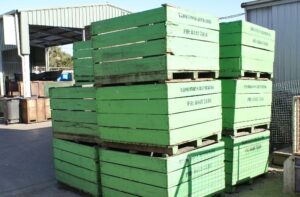A rubbish dump is a vast collection of garbage. It consists of household, industrial, and medical waste that has become polluted with harmful toxins. Many families live and work within these garbage dump communities as recyclers or pickers who make a living by searching through trash to look for items they can sell or keep for themselves.
Trash is a form of solid waste
 A rubbish dump is an illegal collection of waste and garbage. These sites can contain harmful materials that could pose health hazards to those nearby; as well as pollute the environment by leeching chemicals into groundwater supplies. To minimise risks associated with trash dumps, they should be covered with compacted soil that seals it off from air, keeping insects and pests away while helping keep methane emissions under control to promote good respiratory health.
A rubbish dump is an illegal collection of waste and garbage. These sites can contain harmful materials that could pose health hazards to those nearby; as well as pollute the environment by leeching chemicals into groundwater supplies. To minimise risks associated with trash dumps, they should be covered with compacted soil that seals it off from air, keeping insects and pests away while helping keep methane emissions under control to promote good respiratory health.
Municipal Solid Waste (MSW) refers to all items considered unwanted, such as paper, plastics, wood, and metals discarded as waste from homes and septic tanks. MSW can typically be disposed of either through incineration or landfill disposal methods; burying may also be used or placed into recycling facilities for disposal.
Garbage is non putrescible waste that can be broken down by microorganisms to form compost. However, garbage contains bacteria which contaminate water sources; and other pollutants, including toxic heavy metals which cannot be dissolved through waste management activities.
MetroWaste rubbish dump Adelaide is a place where waste material is dumped and allowed to rot, typically found in both urban and rural settings as well as industrial facilities. They pose problems in developing countries due to an absence of reliable collection systems and appropriate landfills; furthermore, trash often ends up dumped into canals and drains which poses serious environmental concerns.
Trash is a source of pollution
Trash pollution threatens both wildlife and human health, with plastic litter being particularly destructive to aquatic life and rivers and oceans alike. Travelling downstream on rivers and oceans and collecting on beaches as it travels downstream further contributes to physical habitat degradation, transporting chemical pollutants and interfering with human uses of coastal environments.
Homes, schools, hospitals, and markets produce large volumes of non-biodegradable waste that accumulates over time in landfills, potentially creating environmental, social and economic issues if it is mismanaged.
Waste from garbage dumps can pollute rivers and lakes by discharging coliform bacteria into nearby bodies of water, which then spreads disease to humans and animals alike. Furthermore, this contamination of groundwater aquifers poses serious threats to city drinking water supplies – which in turn harms both people and animals living nearby.
Also, landfills produce methane gas, an extremely potent greenhouse gas. Bacteria break down trash anaerobically in landfills and produce methane as a byproduct; its release into the atmosphere poses both fire hazards and safety risks; furthermore, scavengers may be drawn into garbage dumps where they risk becoming trapped or injured by it.
Trash is a source of income
Trash, waste and garbage are terms used interchangeably to refer to materials that we discard as unnecessary for reuse or disposal. This can be collected by MetroWaste rubbish dump Adelaide. While recycling or reuse might be possible for some items, others should be composted, incinerated or incinerated in order to dispose of them as trash can pollute waterways and cause environmental harm while endangering human and animal health.
Everyday we dispose of food wrappers, beverage cups and other waste. When trash day comes around, we haul our cans to the curb and wait for workers to collect it all away – but have you ever considered where all that trash ends up going?
Before the introduction of landfills and their regulation, trash was often dumped directly into open pits and burned, creating severe pollution and endangering public health. Today, landfills are used for waste management; dumps may not be maintained regularly enough, potentially leaching harmful toxins into the soil and water supply while providing an attractive landing place for scavengers who risk becoming trapped beneath piles of garbage.
Recent estimates estimate that around 3 million people live in garbage dump communities worldwide – though this number may be an underestimate. Residents in these communities face severe health risks, poverty, stigma and limited access to education, healthcare and employment opportunities; waste picking provides one means of survival but is insufficient in supporting families.
Trash is a source of disease
A rubbish dump, more commonly referred to as a junkheap or garbage dump, is an area for disposing of waste material that does not meet landfill standards and often remains undigested, leading to environmental and health concerns. Discarded plastics and metals pose potential threats by leaching harmful chemicals into soil and water sources and breeding grounds for insects that transmit diseases like malaria or dengue fever.
Open dumping of solid waste can pose numerous threats to human health, such as air pollution and bad odours, as well as inviting insects and rodents that carry diseases that cause cholera, malaria, onchocerciasis and lassa fever. That’s why calling for MetroWaste rubbish dump Adelaide is necessary. A study by PAI Associate International indicates that fly-borne diseases are one of the main contributors to global disease burden, with improper waste dumping contributing significantly to their spread.
Thousands of people live in communities surrounding garbage dumps worldwide, living without access to healthcare or employment and at risk due to living close proximity to potentially harmful materials such as trash in these dumps – which can cause asthma attacks and respiratory infections as well as contamination of water supplies.